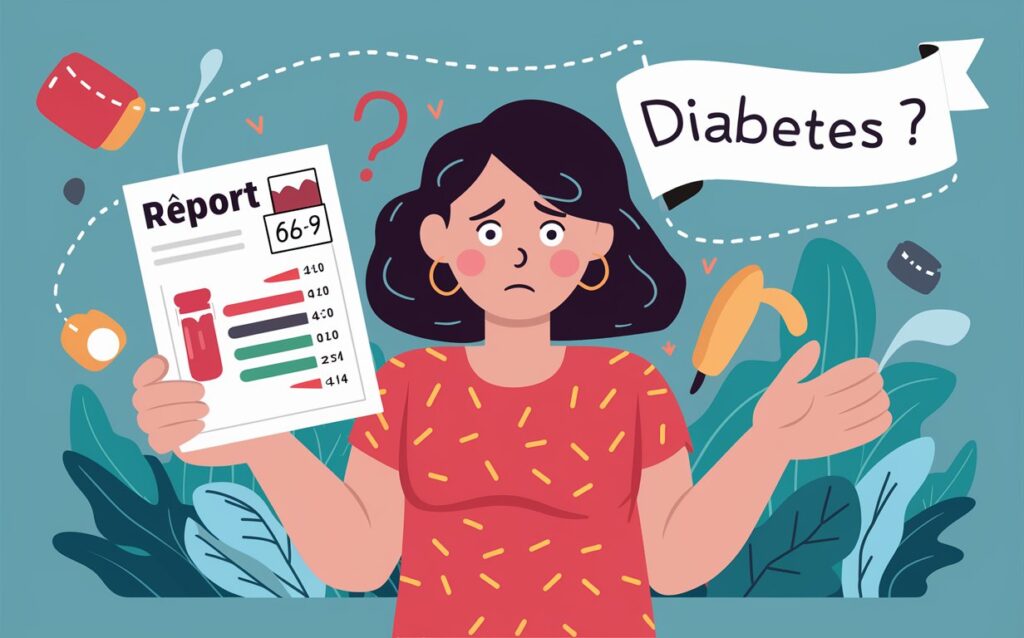Learn effective strategies to mitigate your vulnerability to diabetes through diet, exercise, and lifestyle changes. Discover uncommon yet practical tips to manage and prevent diabetes risk.

Table of Contents
- Introduction
- Understanding Diabetes
- Cutting Carbs: A Key to Diabetes Prevention
- Practical Steps to Reduce Carb Intake
- Benefits of a Low-Carb Diet
- Understanding Glycemic Index
- Avoiding a Sedentary Lifestyle
- Stress Management
- Getting Regular Check-ups
- Quitting Smoking
- Limiting Alcohol Consumption
- Adequate Sleep
- Educating Yourself
- Conclusion
Introduction
Diabetes is a chronic condition affecting millions worldwide. While genetics play a role, lifestyle choices, particularly diet, can significantly influence your risk. One of the most effective strategies to lower your risk of diabetes is to manage your carbohydrate intake. Let’s explore how reducing carbs can help you maintain healthy blood sugar levels and prevent diabetes.
Understanding Diabetes

Types of Diabetes
Diabetes comes in several forms, with Type 1 and Type 2 being the most common. Type 1 is often diagnosed in childhood and involves the body’s inability to produce insulin. Type 2, which is more prevalent, typically develops in adulthood and is strongly linked to lifestyle factors such as diet and exercise.
Causes and Risk Factors
Several factors increase the risk of diabetes, including genetics, obesity, and physical inactivity. However, diet plays a pivotal role in managing and preventing this condition. Consuming high amounts of carbohydrates, particularly refined carbs, can lead to elevated blood sugar levels and insulin resistance, which are precursors to diabetes.
Cutting Carbs: A Key to Diabetes Prevention
The Hidden Villains: Refined Carbs
Refined carbohydrates like white rice and white flour products are major contributors to increased diabetes risk. These foods rapidly convert into glucose, leading to sudden spikes in blood sugar levels. Regular consumption of these high-carb foods can overload the body’s insulin response, leading to insulin resistance over time.
Impact of White Rice
White rice is a staple in many diets, especially in Asian cultures. However, it has a high glycemic index, meaning it can cause a significant increase in blood sugar levels. Studies have shown that frequent consumption of white rice is associated with a higher risk of developing Type 2 diabetes.
The Allure of Bakery Items
White bakery items made from refined white flour, such as bread, pastries, and cakes, are also high in carbs. These foods not only contribute to weight gain but also increase the risk of early-onset diabetes, especially in young adults who consume these items regularly.
Practical Steps to Reduce Carb Intake
Switching to Whole Grains
Replacing refined grains with whole grains is a crucial step in reducing your carb intake. Whole grains like brown rice, quinoa, and oats have a lower glycemic index and provide more fiber, which helps regulate blood sugar levels.
Choosing Roti Over Rice
In many cultures, particularly in South Asia, roti (a type of flatbread) made from whole wheat or other whole grains like jowar (sorghum) is a healthier alternative to white rice. Although both have similar calorie counts, roti is usually consumed in smaller quantities, making it a better option for controlling carb intake.
Limiting High-Carb Foods
Avoiding or limiting high-carb foods like sugary snacks, sodas, and processed foods is essential. Focus on incorporating more low-carb options such as vegetables, lean proteins, and healthy fats into your diet. This shift can help stabilize blood sugar levels and reduce diabetes risk.
Benefits of a Low-Carb Diet
Improved Blood Sugar Control
Reducing carb intake helps prevent large spikes in blood sugar levels, making it easier for your body to manage insulin production and sensitivity. This can significantly reduce the risk of developing Type 2 diabetes.
Weight Management
A low-carb diet can also aid in weight loss and maintenance. Excess weight, particularly around the abdomen, is a major risk factor for diabetes. By cutting carbs, you can lower your calorie intake and shed excess pounds more effectively.
Enhanced Energy Levels
Switching to a low-carb diet can lead to more stable energy levels throughout the day. High-carb foods often cause energy crashes after the initial spike, while a diet rich in protein and healthy fats provides sustained energy.
Understanding Glycemic Index
What is the Glycemic Index?
The glycemic index (GI) gauges the rate at which foods increase blood sugar levels. Foods with a high GI cause rapid spikes, while low-GI foods result in slower, more controlled increases. Choosing low-GI foods is beneficial for blood sugar management.
Choosing Low Glycemic Index Foods
Opt for low-GI foods like whole grains, legumes, and most fruits and vegetables. These foods help maintain steady blood sugar levels and improve overall metabolic health.
Avoiding a Sedentary Lifestyle

Risks of Inactivity
Leading a sedentary lifestyle greatly increases the risk of developing diabetes. Lack of physical activity can lead to weight gain and reduced insulin sensitivity, both of which increase diabetes risk.
Staying Active
Incorporate physical activity into your daily routine to counteract the effects of a sedentary lifestyle. Simple changes like taking the stairs, walking during breaks, and standing desks can make a big difference.
Stress Management
Impact of Stress on Blood Sugar
Chronic stress can lead to elevated blood sugar levels due to the release of stress hormones like cortisol. Controlling stress is vital for keeping blood sugar levels healthy.
Stress Reduction Techniques
Practice stress reduction techniques such as meditation, yoga, deep breathing exercises, and hobbies that you enjoy. Consistent exercise is also effective in lowering stress levels.
Getting Regular Check-ups
Importance of Health Screenings
Regular health screenings are essential for early detection and management of diabetes. Blood tests like fasting blood glucose and HbA1c can indicate your risk and help you take preventive measures.
Key Tests and Their Significance
Discuss with your healthcare provider about necessary tests and their frequency. Monitoring these metrics can help you stay on top of your health and make informed decisions.
Quitting Smoking
Connection Between Smoking and Diabetes
Smoking increases the risk of developing diabetes and its complications. Nicotine affects insulin sensitivity, making blood sugar control more difficult.
Strategies to Quit Smoking
Pursue assistance through smoking cessation programs, prescription medications, or counseling. Quitting smoking not only lowers diabetes risk but also improves overall health.
Limiting Alcohol Consumption
Effects of Alcohol on Blood Sugar
Alcohol can cause both low and high blood sugar levels, depending on the amount and frequency of consumption. It’s essential to monitor alcohol intake to prevent these fluctuations.
Guidelines for Safe Consumption
If you decide to consume alcohol, make sure to do so in moderation. The general guideline is up to one drink per day for women and up to two drinks per day for men. Always consume alcohol with food to help manage blood sugar levels.
Adequate Sleep
Role of Sleep in Diabetes Prevention
Poor sleep quality and duration can negatively affect insulin sensitivity and blood sugar levels. Strive to get 7-8 hours of restful sleep every night.
Tips for Better Sleep Hygiene
Maintain a consistent sleep schedule, develop a soothing bedtime routine, and make sure your sleep environment is comfortable and distraction-free.
Educating Yourself
Importance of Diabetes Education
Staying informed about diabetes prevention and management is empowering. Education helps you make better lifestyle choices and stay proactive about your health.
Reliable Sources for Information
Consult reputable sources such as healthcare providers, diabetes associations, and scientifically backed publications for accurate information.
Conclusion
Preventing diabetes involves making conscious lifestyle changes, particularly in your diet. By reducing carbohydrate intake, especially refined carbs, and adopting healthier habits, you can significantly lower your risk of developing diabetes. Small adjustments in your daily routine can lead to substantial health benefits, ensuring a healthier and happier life.

One thought on “How to Lower Your Risk of Diabetes?”